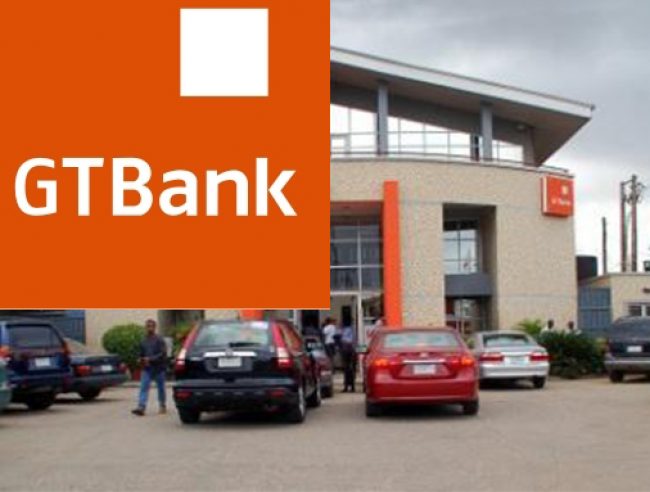

Guaranty Trust Bank is in the forefront of aggressive cost cutting drive of banks unable to grow revenue.
Cost cutting has been the bank’s profit growth strategy since 2017 – when it lifted net profit a clear 27 percent from flat growth in gross earnings.
In 2018, the bank again raised net profit by 10 percent from less than 4 percent improvement in revenue.
The bank’s management’s cost-cutting hammer became even heavier in 2019 as revenue performance proceeded from marginal improvement to a decline in the year.
While gross earnings dropped by 3.3 percent to N326 billion at the end of the third quarter in September 2019, the bank raised after tax profit by 3.4 percent to over N147 billion over the same period.
Read Also: Minister Orders Security Agents To Evict Diaspora Commission Staff From Office
The bank’s main income line – interest earnings, have been responsible for weakening gross earnings since 2018.
Interest income dropped by 6.2 percent in 2018 and was again down by 5.6 percent to N224 billion at the end of September 2019.
Fee/commission income and other income that provided the strength for the marginal revenue improvement in 2018, slowed down considerably in 2019.
The slowdown, against the continued drop in interest income, accounted for the shift from marginal increase in gross earnings to a decline at the end of the third quarter.
Management of the bank is however not letting the weakness in revenue lead to a drop in profit and it is doing this for the third year running as an escape route to defend profit.
It is simply shifting resources by way of cost cutting from other stakeholders to build wealth for shareholders.
Depositors and other lenders are feeling the pinch more than the others.
Cost of funds was pruned down all the way from the first quarter of last year, providing the biggest cost saving for the bank.
That made it possible for GTB to change a decline in interest income into a marginal gain in net interest income at the end of the third quarter.
Employees are equally facing the squeeze in the management’s bid to save cost and defend profit.
Personnel cost is one of the cost cutting areas that the bank has relied upon to put up profit improvement so far in the year.
The bank’s workforce remains below the 2012 peak and personnel cost went down by 3 percent year-on-year at the end of the third quarter.
The bank also extracted a lot of cost savings from other operating expenses that represent the cost of materials purchased from other operating units to carry out its business.
This represents the channel through which aggressive cost saving is transferring a winding down effect to all corners of the economic society in a multiplier chain.
Cost saving from the three key expense lines enabled the bank to put up the profit improvement at the end of the third quarter.
Despite that, GTB is facing another year of profit slowdown with gross earnings headed for the worst growth record in three years.
Cost cutting has been the easy option for banks and other companies to defend or grow profit in a constrained revenue situation.
Of the three major cost areas of banks – interest expense, loan impairment charges and operating cost, only operating cost is within the control of managements.
Personnel expenses are a key component of operating cost –an area where some banks seem to have proceeded from cost cutting to cost crushing.
Whenever revenue is weakening or the uncontrollable cost elements of interest expenses and credit losses have made fresh incursions into revenue, bank managements appear to take vengeance for that on operating expenses.
Layoff of workers and then squeezing the reduced number and facilities to cover up productivity have continued to be the back door approach for building or defending shareholder value.
GTB has been able to include interest expenses in its cost cutting drive.
A sharp slowdown in interest cost provided a major cost cutting centre in 2018.
It was again the biggest cost saving area for the bank in 2019, dropping by over 23 per cent at the end of the third quarter to N51 billion.
The bank has never seen a drop in interest expenses that high for several years.
The drop is more than four times the decline in interest income over the same period.
The drop more than countered the impact of the drop in interest income and saw a marginal improvement of net interest income at about N173 billion.
Loan losses are however an area that was well beyond management’s control in 2019.
Bad debts were on the rise in the year with an upsurge of close to 59 percent in loan impairment charges at the end of the September.
Sharp drops in loan loss expenses in the preceding two years helped to keep profit growing while the rising trend in 2019 also led to profit slowdown.
Cost cutting, as it continues to happen in the banking industry and beyond is usually given a wrong colouring of eliminating inefficiency.
In actual sense it is happening in an environment of efficiency and workers, who manage to escape layoff, have to pay for it in a condition of take it or leave.
Such an excessive pressure on the workforce to produce more with reduced resources is quite deserving of an urgent regulatory redress.
From year to year, effort to reduce cost to income ratio has become a major corporate target, which happens by squeezing operating cost further.
The strength for profit making has shifted from growing revenue to cutting costs.
This is understood as an indication that all is not well with the system.
-TheCitizen Newspaper






















It’s usual trend in the corporate world all over. They are simply blocking leakages in expenses, wink wink, lol…. I salute their tenacity in surviving the harsh economic situation and posting any profit at all.